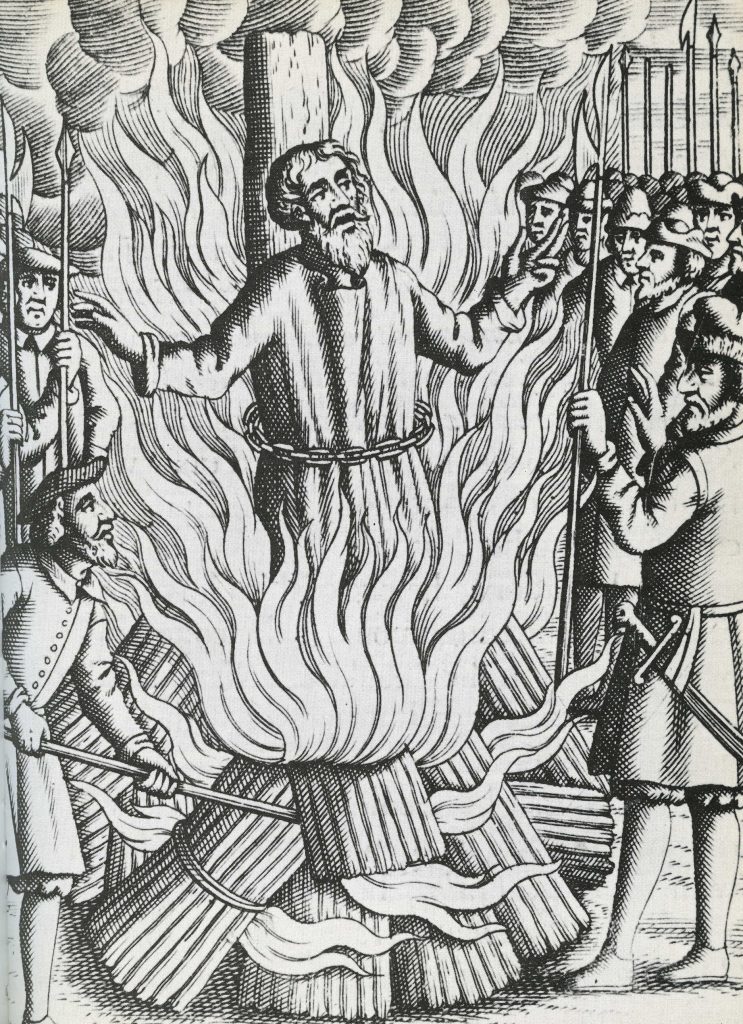
The anniversary was celebrated in London with bonfires and bell-ringing, lighted fire-barrels were rolled along Cheapside. It was, in a way, the precursor to Guy Fawkes Day (1605 onwards). Protestants celebrated it with such joy as it was the end of the reign of her sister Queen Mary I. ‘Bloody’ Mary, as she was named by Protestants, had 287 Protestants burnt at the stake, mostly relatively ordinary people: clergy, apprentices, artisans, and agricultural workers. 60 were women; 67 were Londoners: the majority were of the younger generation, and most from the South East of England.
The executions were overwhelmingly unpopular, ghastly exhibitions of brutality, and in 1555 the weather was very wet so the burnings an even slower form of torture. The savagery was blamed on the old religion and particular the people who came over with Mary’s Spanish husband. Ironically, Philip, in fact, urged caution. When Mary refused to be as lenient to religious dissidents as she was to political ones, he suggested they should, at least, be in private. She felt that as immortal souls were at risks the public nature of the death was a useful deterrent.
So, when, three years later, in 1558, in the early hours of the 17th November (6am) Queen Mary died, London rejoiced. An old regime, a foreign regime, a Catholic regime was sweep away by a young Queen (Elizabeth was 25), with a young Court sworn to protect the new Protestant religion.
More on the accession of Elizabeth I here.
Soon, Foxe’s Book of Martyr’s outsold all other books printed except the Bible, and enthusiasm for religious reform morphed into anti-Catholic intolerance.
One of the martyrs in the book is Thomas Tomkins, a weaver and a Londoner from Shoreditch.
Tomkins was a humble but godly man who was kept imprisoned by Bishop Bonner, the Bishop of London, at his Palace at Fulham. Here he was beaten. The Bishop personally beat him around the face and ripped off part of his beard. The beatings continued for six months. Finally, exasperated at his failure to persuade the weaver of his error, Bonner burnt Tomkins hand with a lighted taper until ‘the veins shrunk and the sinews burst’. Bonner wanted to give him a foretaste of the fires of heresy, indeed the very fires of Hell that the weaver faced.
But nothing would avail; Tomkins, simple man that he was, would not accept that bread was made into flesh. (Transubstantiation). He would not say that which he did not believe. So he met his end at Smithfield by fire with his bandaged hand in the reign of Queen Mary on 16th March 1555.

Discover more from And Did Those Feet
Subscribe to get the latest posts sent to your email.
